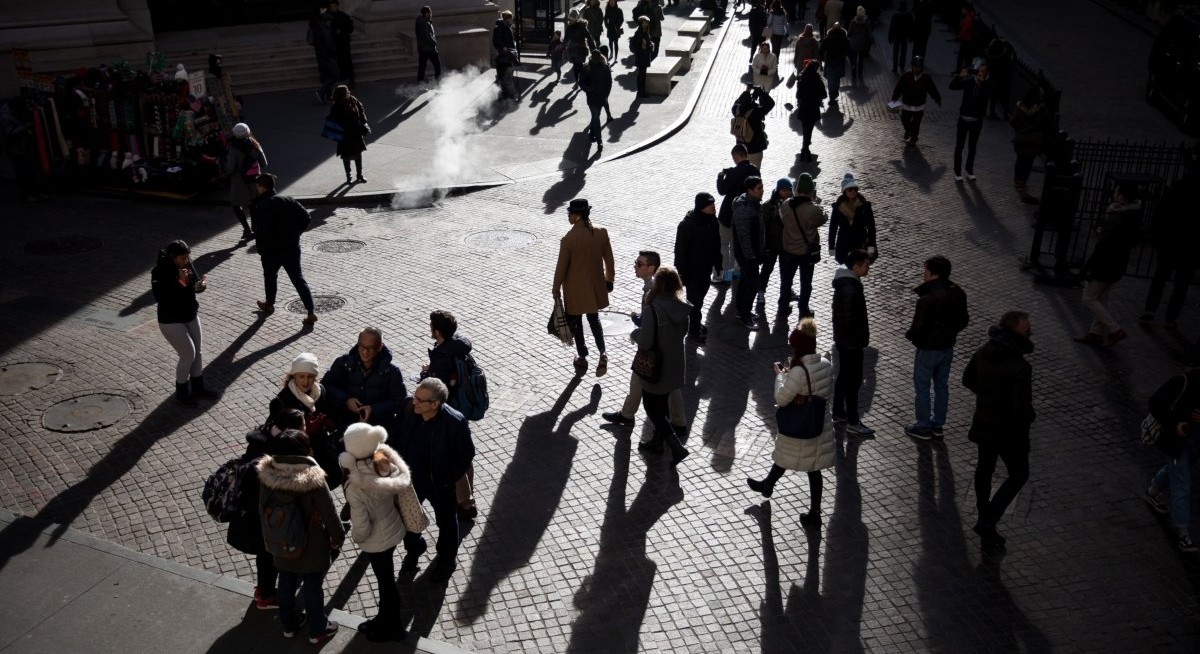A key issue facing the officials: Has the lodestar they use to guide their actions increased and, if so, should they push rates markedly higher in response — risking more financial turmoil in the process.
Known to economists as R* — pronounced “r-star” – the guidepost is the inflation-adjusted short-term interest rate that’s neutral for the economy, neither pushing it ahead or holding it back. If the Fed wants to slow growth to combat inflation – as it does now – it raises rates above that level. In a recession, it slashes rates below R* to encourage companies and consumers to borrow and spend.
The trouble for the Fed is that it’s not easy to sort through the ebbs and flows of the economy to identify what the neutral rate is, especially following a once-in-a-century pandemic.
See also: US trade deficit unexpectedly shrinks to smallest since 2020
“Honestly, we don’t know” where R* is, Fed Chair Jerome Powell said in a March 7 congressional hearing.
Complicating Fed officials’ thinking: The level of interest rates that’s most appropriate for the economy as a whole is not necessarily the one that’s best for markets – and indeed, could run the risk of triggering disruptions in a financial system that’s grown dependent on easy credit.
Error Risk
See also: Treasuries gain as Fed cuts, traders wager on two more in 2026
All the uncertainties surrounding the Fed’s stance heightens the risk it will make a policy error. If officials raise rates a lot more and the neutral rate hasn’t gone up, they run the danger of triggering a financial crisis or crashing the economy into a recession. But if R* has indeed risen and they don’t respond sufficiently, the US will be stuck with elevated inflation.
Two closely watched estimates of the neutral rate derived from research by Federal Reserve Bank of New York President John Williams and his colleagues were suspended in November 2020 in recognition of pandemic-era difficulties. At that time, they pegged the neutral rate at less than a half percent, after taking account of inflation.
With investors expecting inflation to average 2.8% over the next two years, that would work out to a nominal interest rate of about 3.25%. And it would put the Fed’s current 4.5% to 4.75% rate target clearly in restrictive territory.
Some experts, though, argue that the neutral rate has been pushed up by a percentage point or more by changes in the economy and economic policy wrought by the pandemic and Russia’s invasion of Ukraine — including wider budget deficits and increased debt loads.
If that’s right, the Fed’s current rate setting doesn’t look particularly restrictive, if at all.
The hunch that R* has risen has been reinforced by the economy’s ability to hold up even as the Fed boosted its benchmark rate from near zero a year ago. US payrolls jumped by 311,000 in February — more than triple the pace economists see as the long-term trend — the Labor Department reported on Friday.
Speaking before that release, Powell said last week that, looking at available data, “it’s hard to make a case that we’ve over-tightened.”
To stay ahead of Singapore and the region’s corporate and economic trends, click here for Latest Section
Terminal Rate
He said policymakers were likely to raise their sights on where rates will top out during the current tightening campaign, when they gather to discuss monetary policy on March 21-22. In December, most Fed officials saw rates peaking at 5.1% to 5.4%.
The Fed chair also held out the possibility the central bank could revert to a half percentage point rate increase at that meeting, after stepping down to a quarter-point pace last time.
Diane Swonk, chief economist at KPMG LLP, said she expects a half-point move, given the overall strength of demand. “It doesn’t look like what we’re seeing in the financial system is of the magnitude to force the Fed to back off,” she said.
Former Treasury Secretary Lawrence Summers on Friday said that “there’s a quite good chance” the Fed will ultimately have to raise its benchmark near 6%, given that the current setting isn’t much above the rate of inflation — which “doesn’t point to a lot of pressure to bring inflation down.”
Embedded in their quarterly projections, Fed officials’ forecasts include an implicit estimate of the neutral rate, comparing their predictions for the long-run policy and inflation rates.
Current Estimate
Based on the median estimates of those variables, policymakers currently peg the real rate at just a half percentage point. That’s down sharply from 2.25% in January 2012, and reflects a decade of sluggish growth and low borrowing costs following the 2007-09 financial crisis. Financial markets, in contrast, were buoyant during that period.
A wide variety of reasons has been put forward to explain the decline. Savings were boosted as more Americans prepared for retirement and for longer lives. Slowing labour-force growth and lacklustre productivity gains, meanwhile, discouraged corporate investment.
Summers, a paid contributor to Bloomberg Television, has said he expects the neutral rate to rise in the coming years, perhaps to 1.5% to 2%, boosted by increased government spending on defence and stepped-up investment to make the transition to net-zero carbon emissions.
At least part of the decline in R* following the financial crisis was due to forces that were peculiar to that period and aren’t applicable now, according to Bruce Kasman, chief economist for JPMorgan Chase & Co. Households were de-leveraging, banks were pulling back and emerging markets were retrenching. The US and Europe also aggressively acted to rein in budget deficits back then.
While Kasman was leery of saying exactly by how much R* risen, he said the increase could be one percentage point or more, depending on how the economy performs in coming months.




